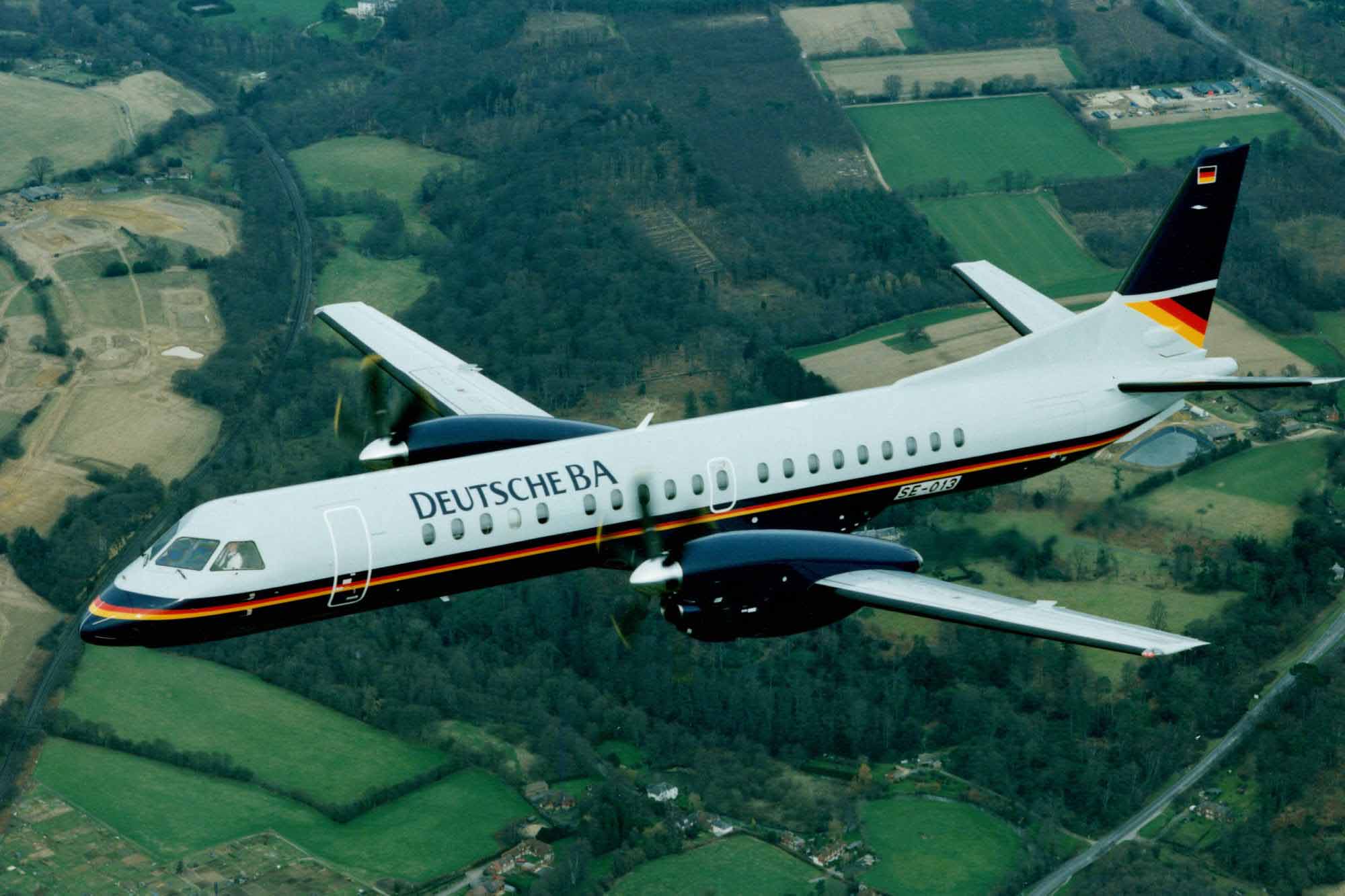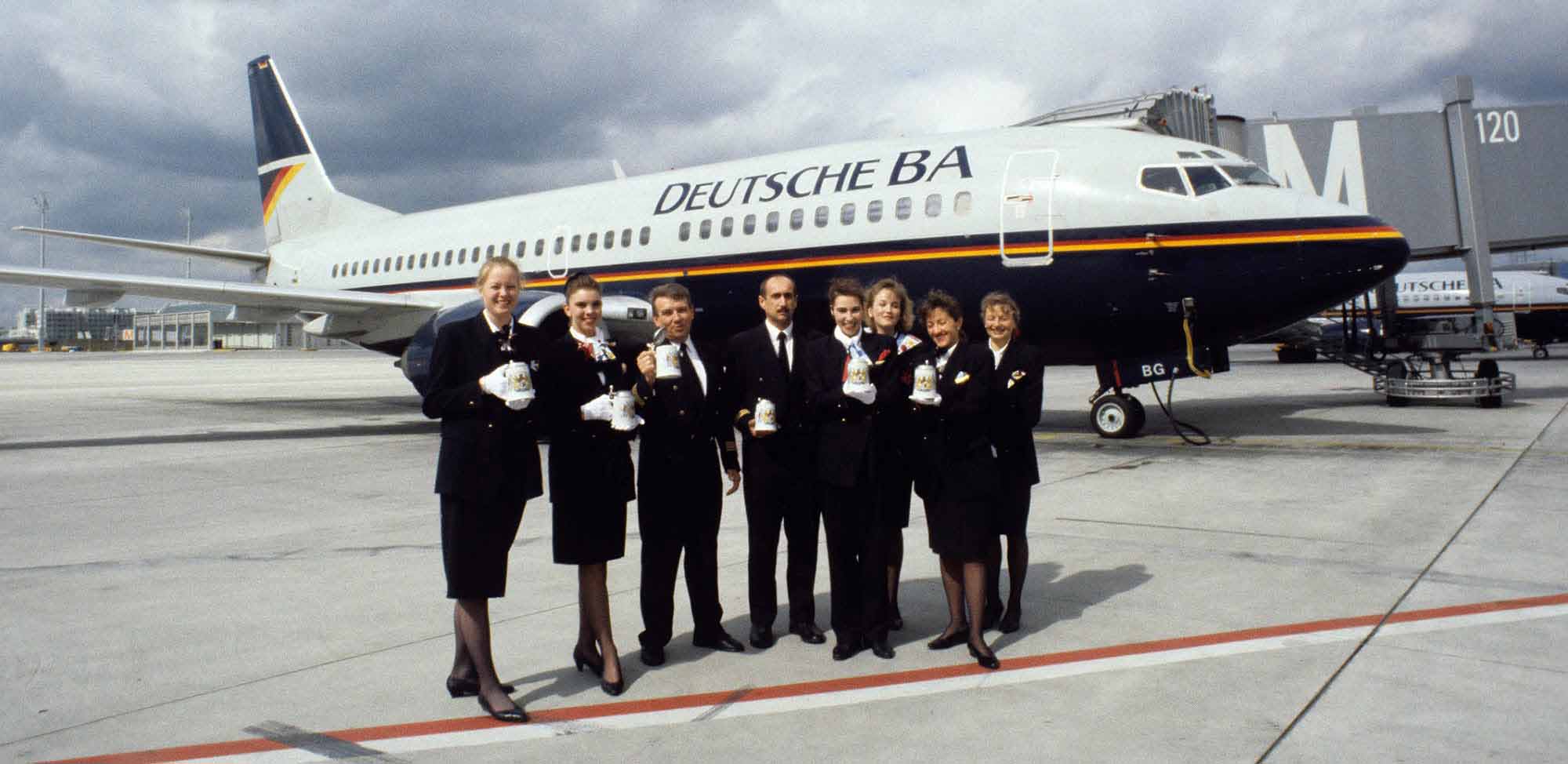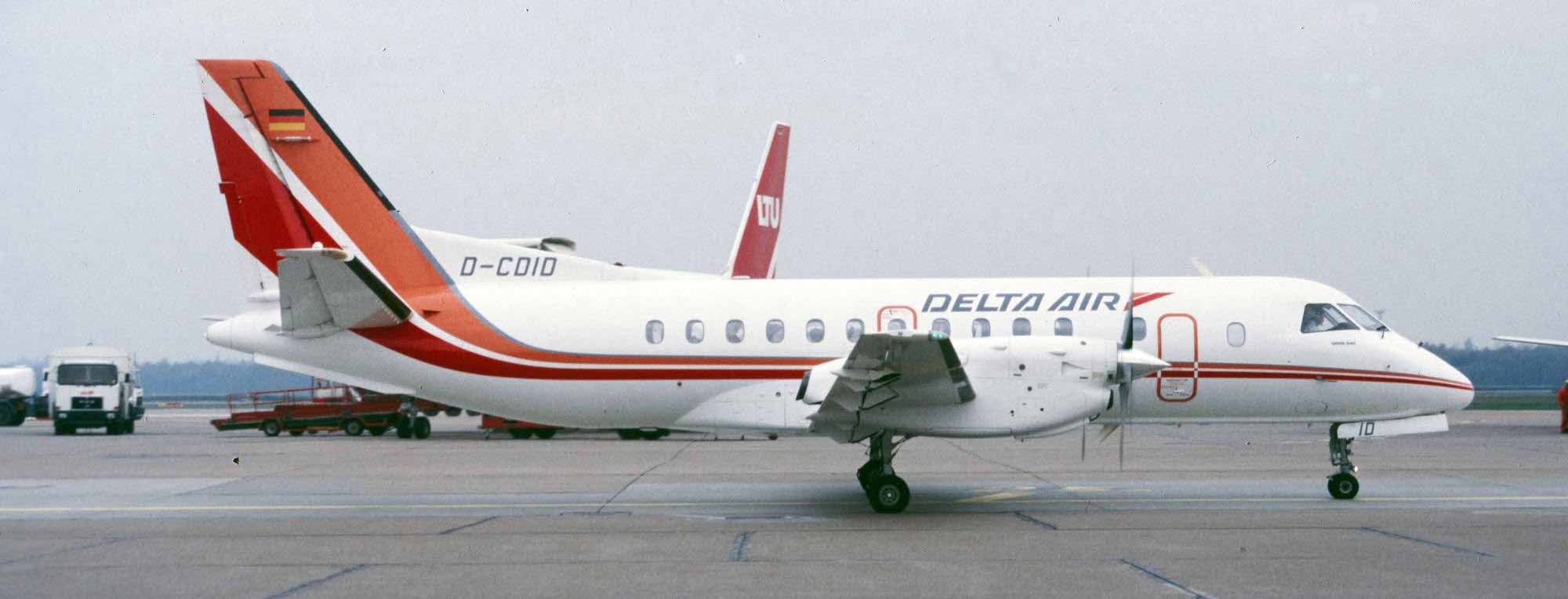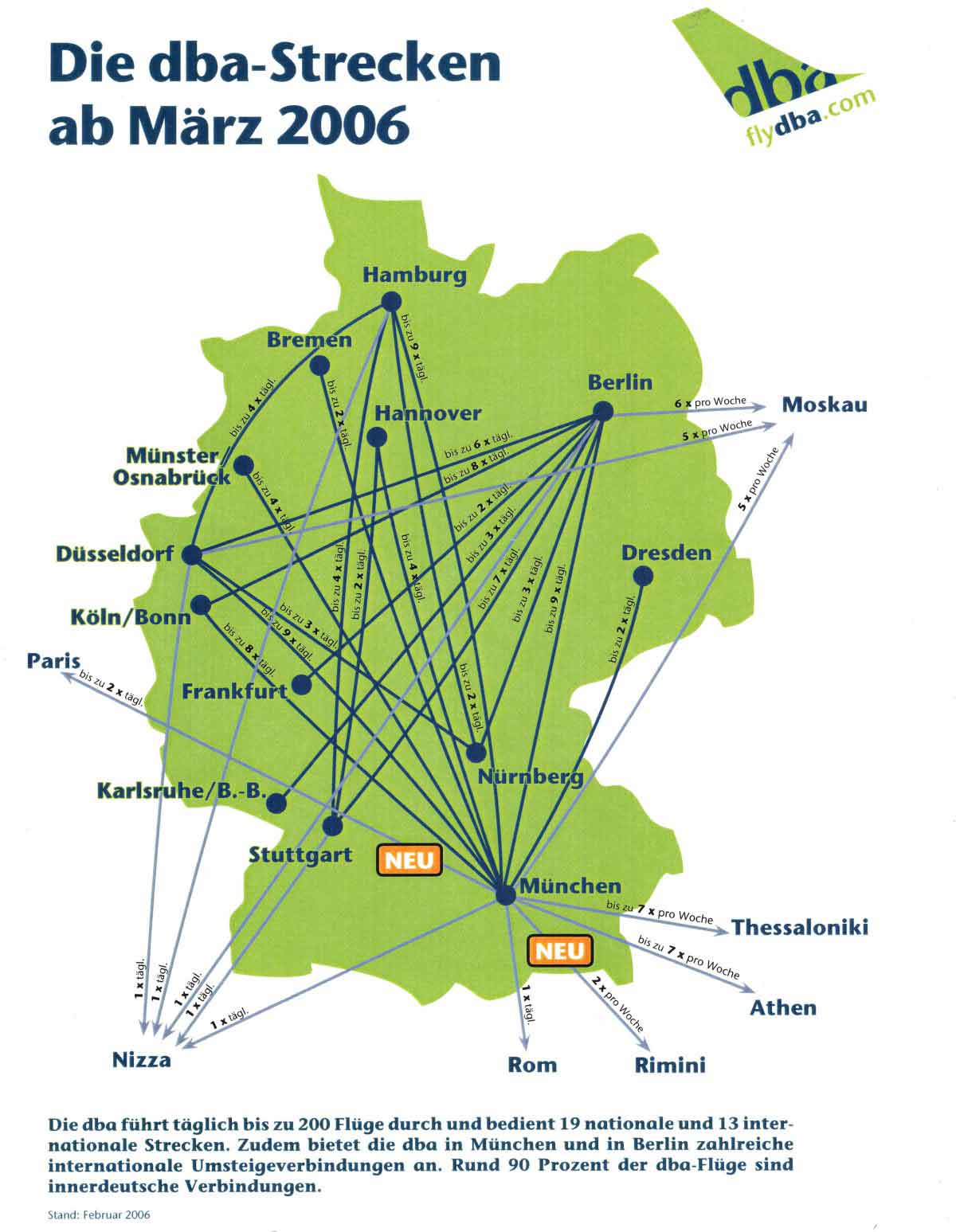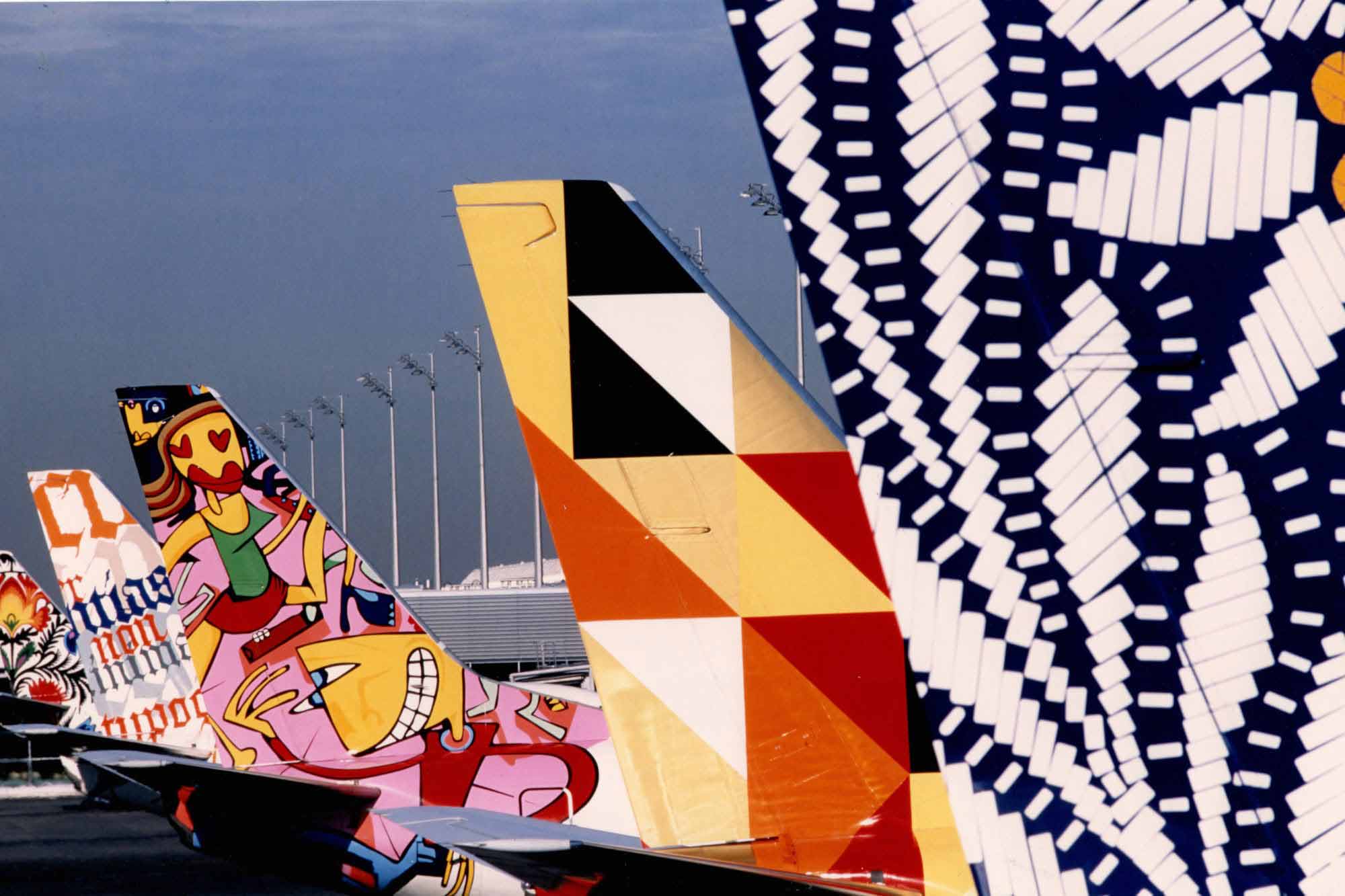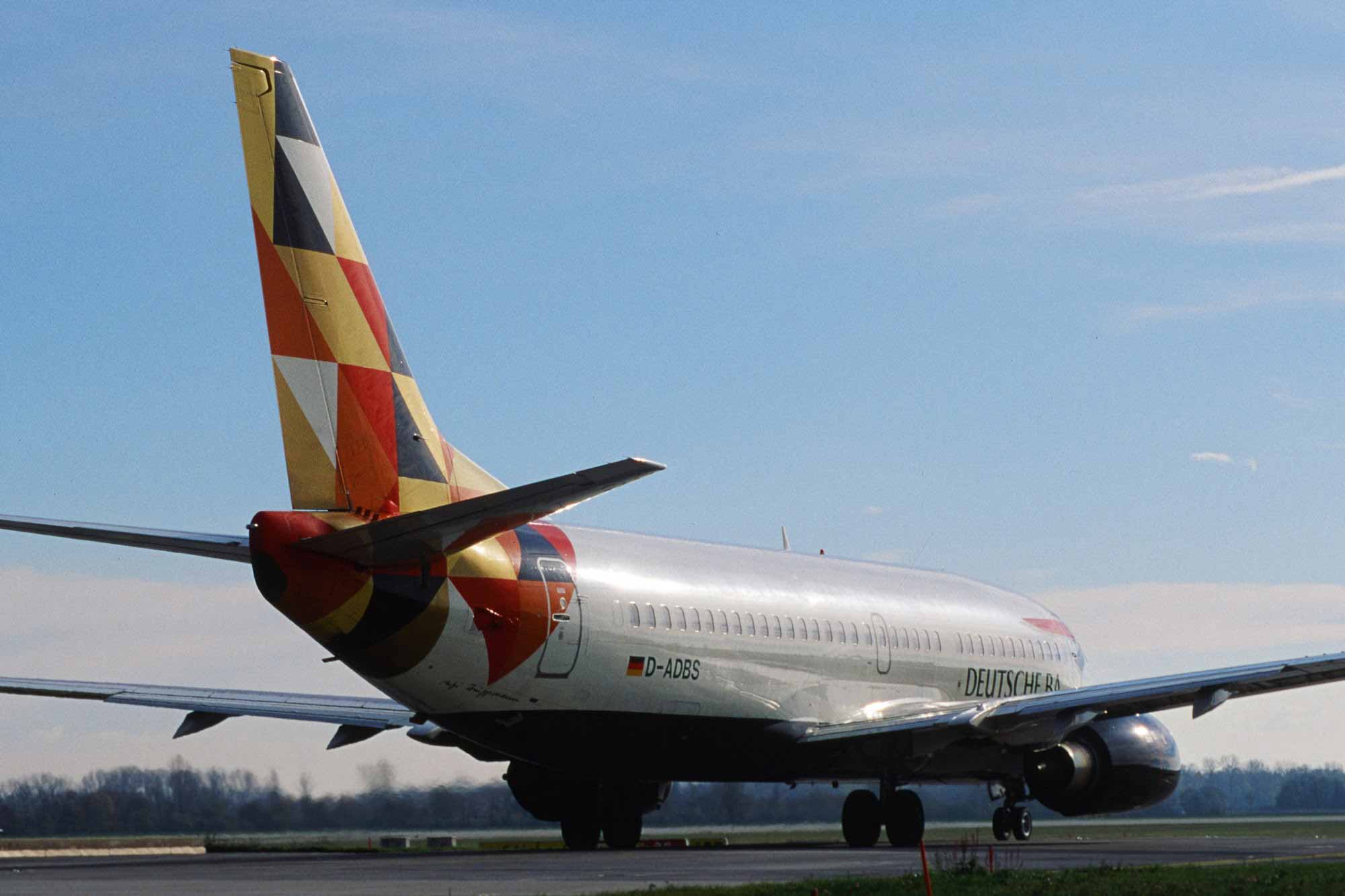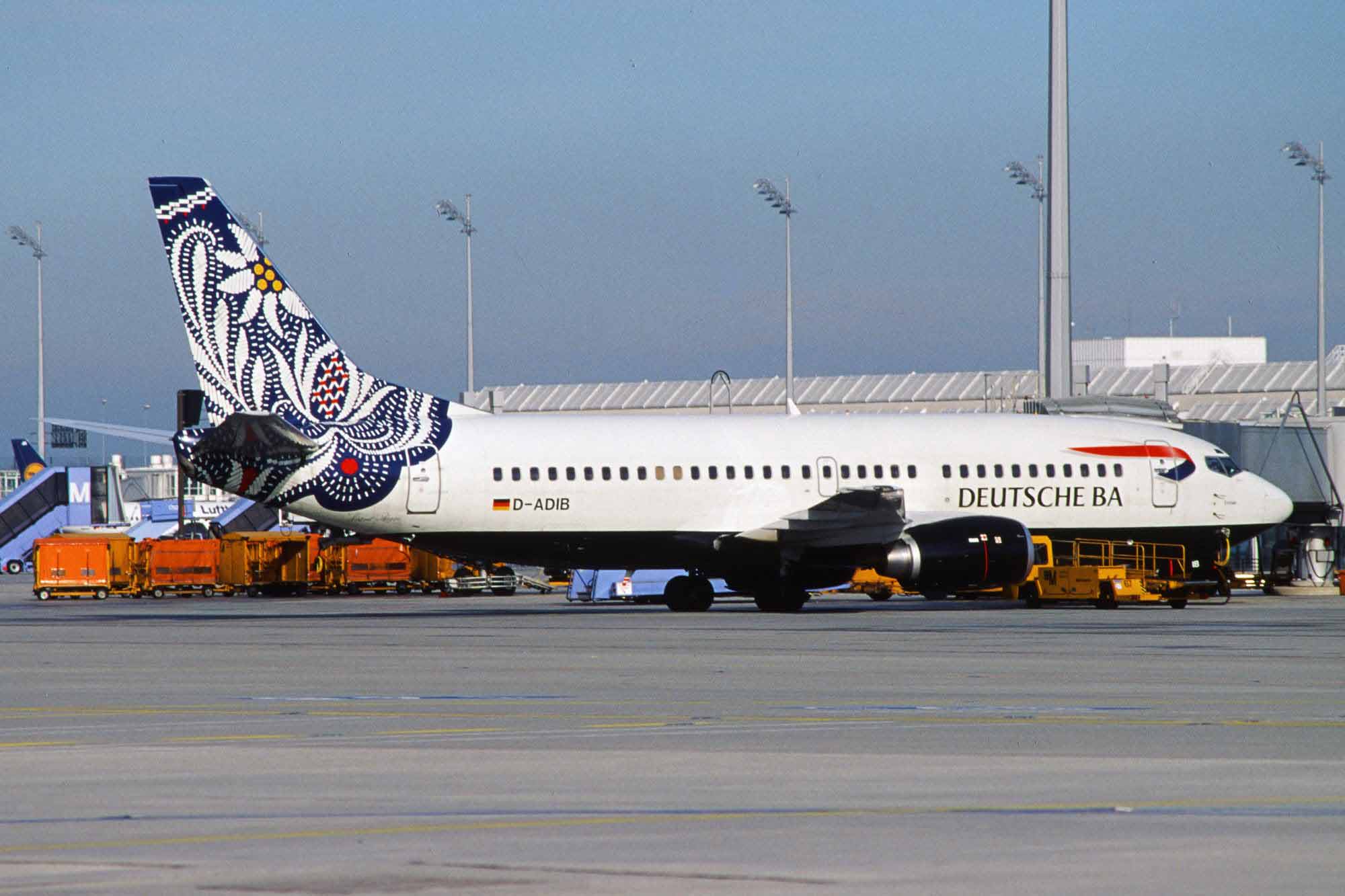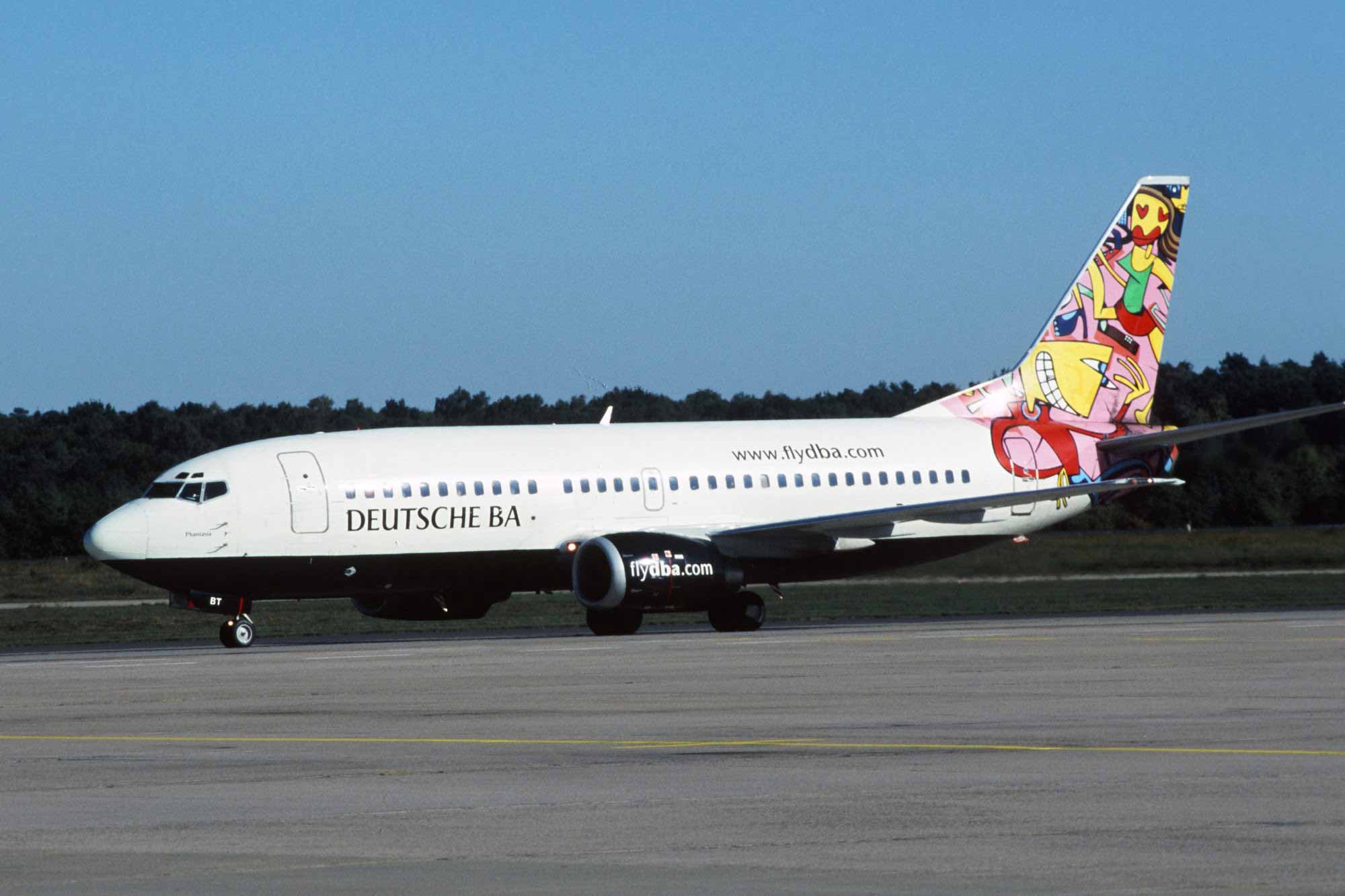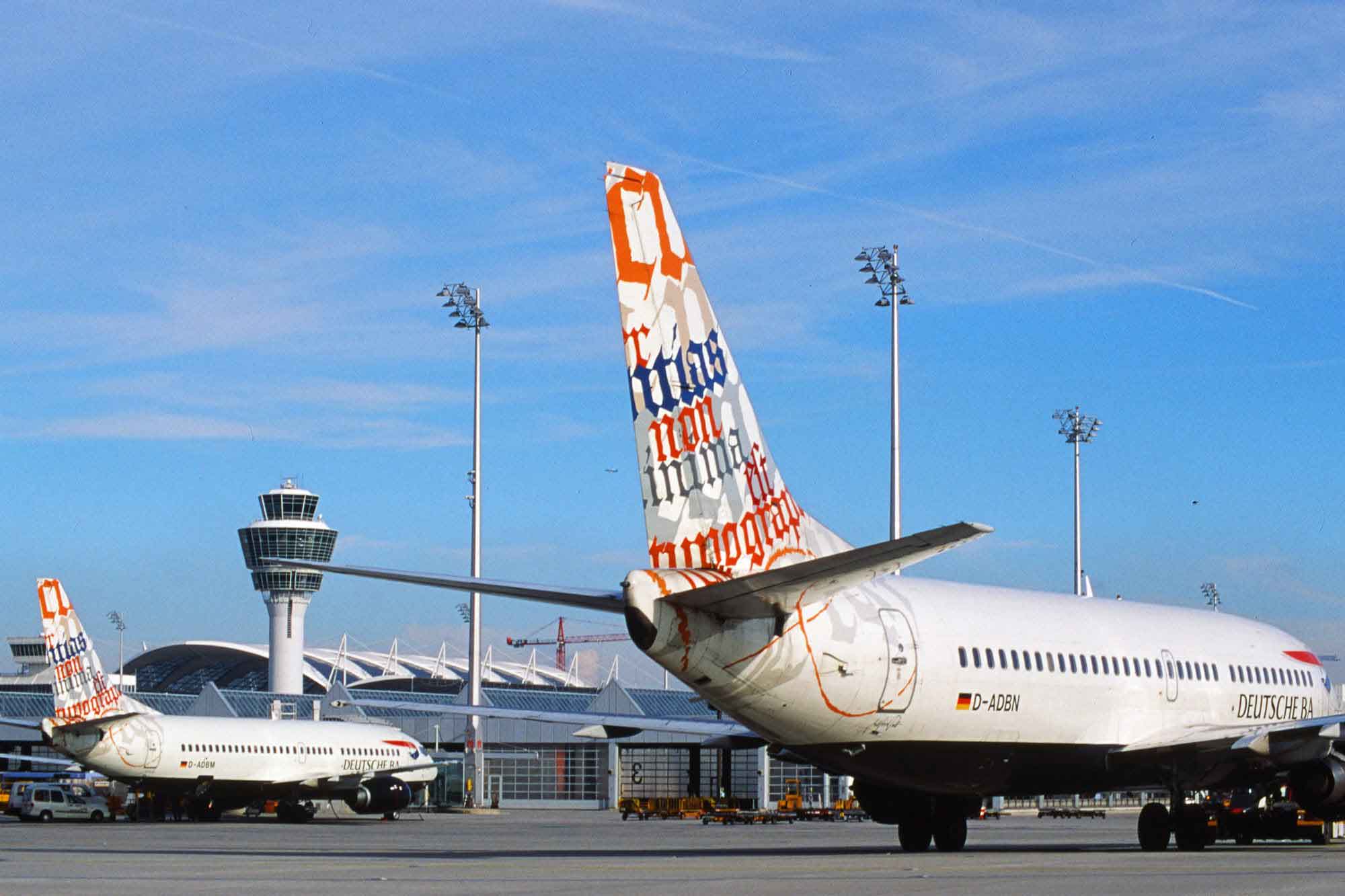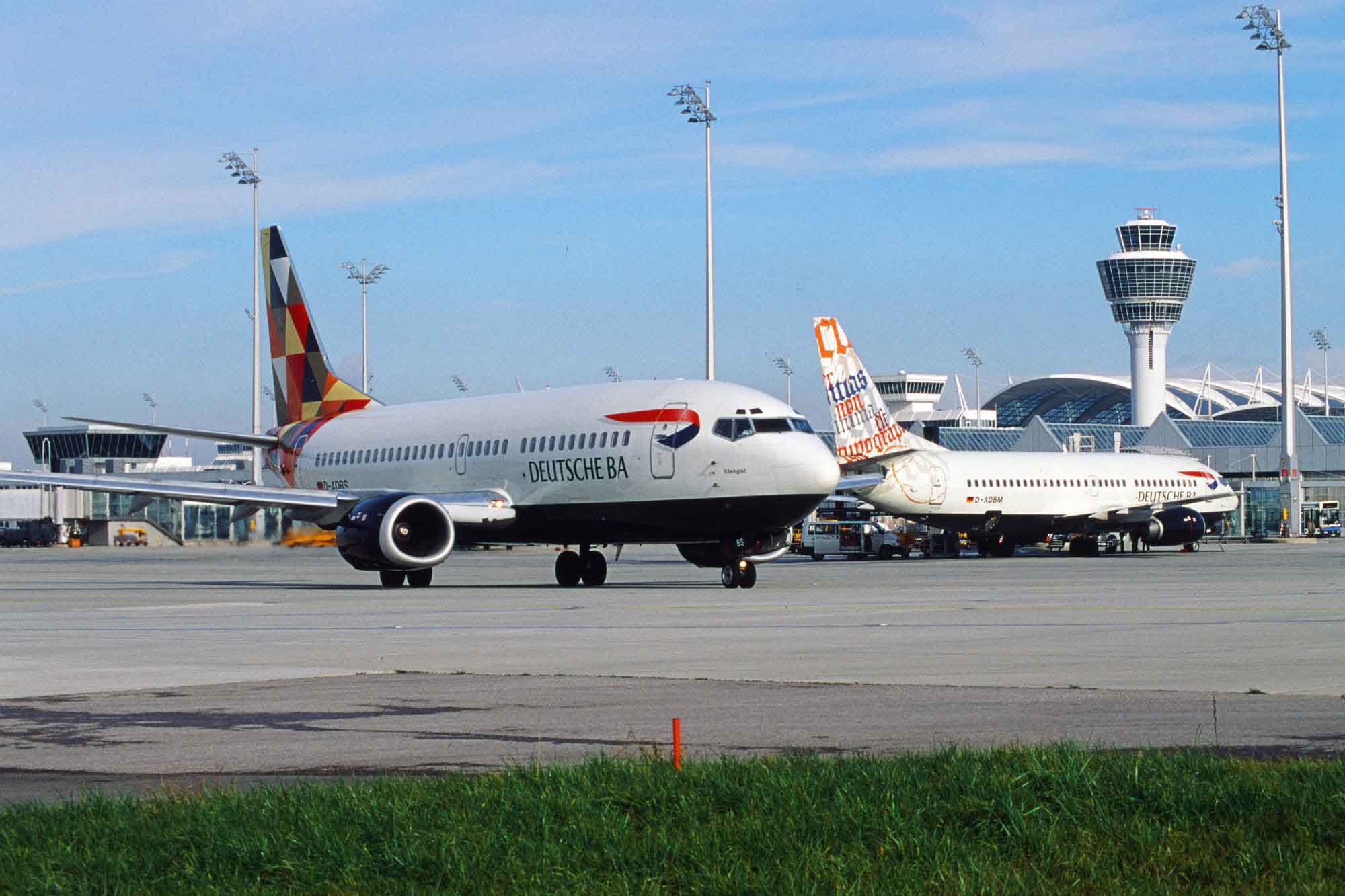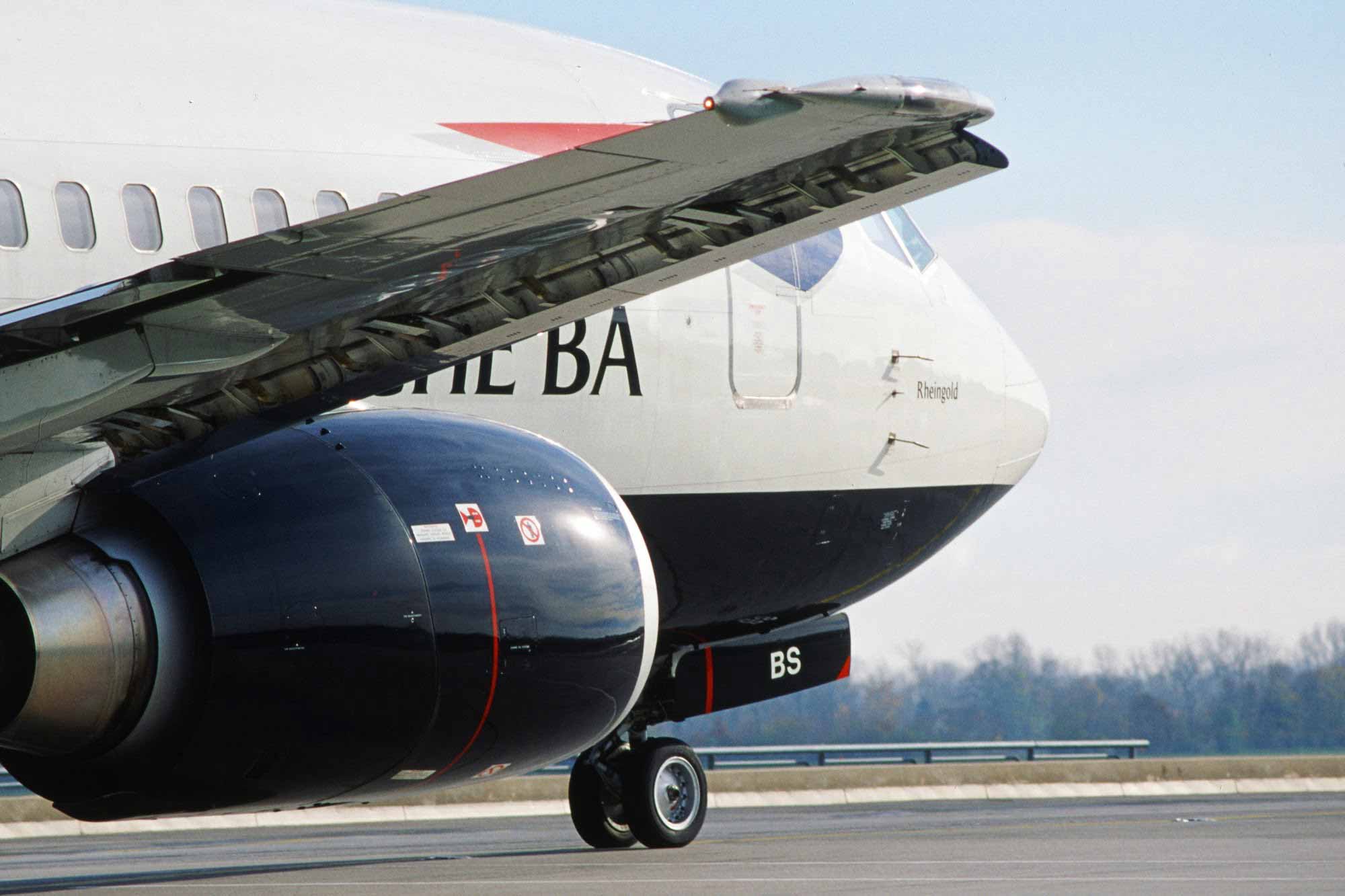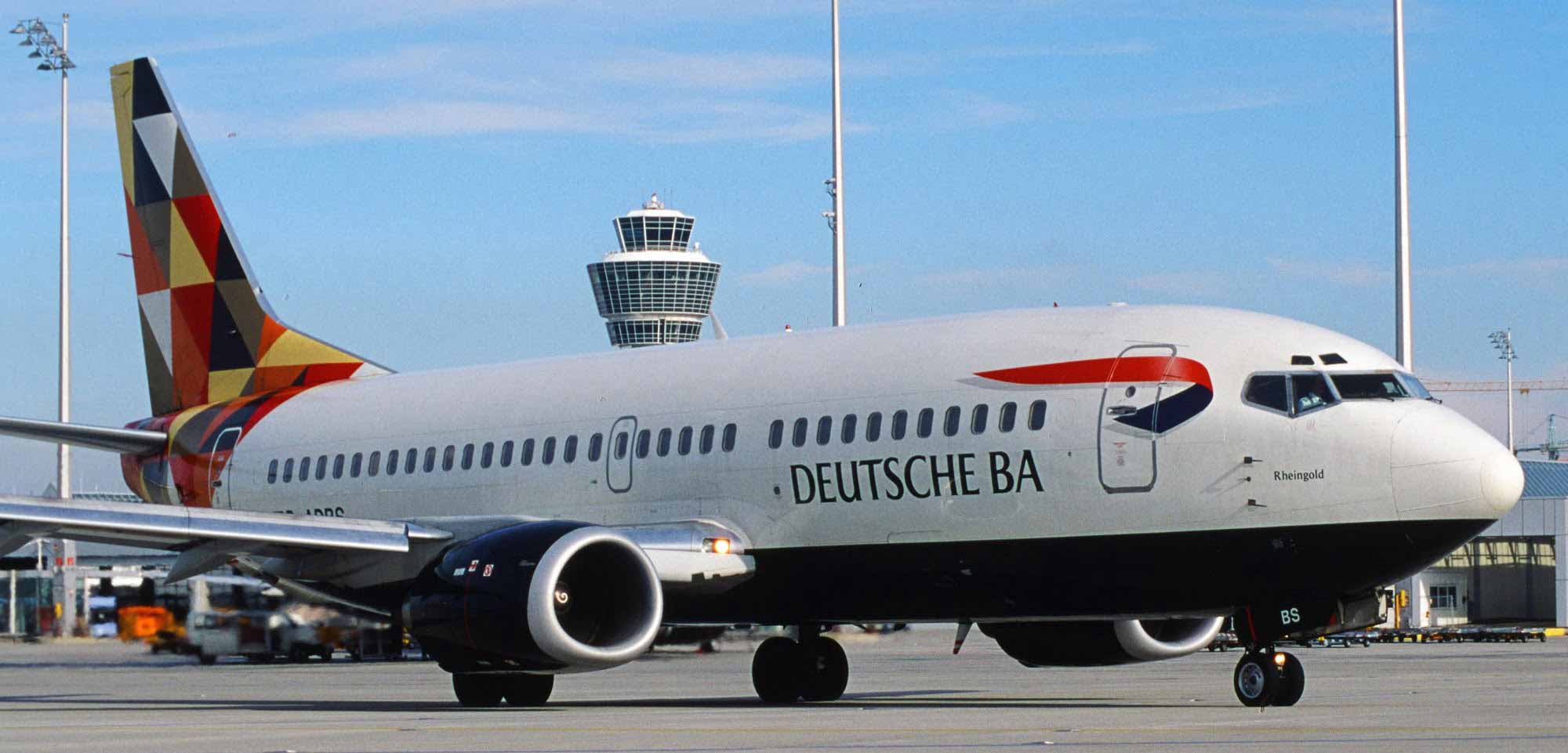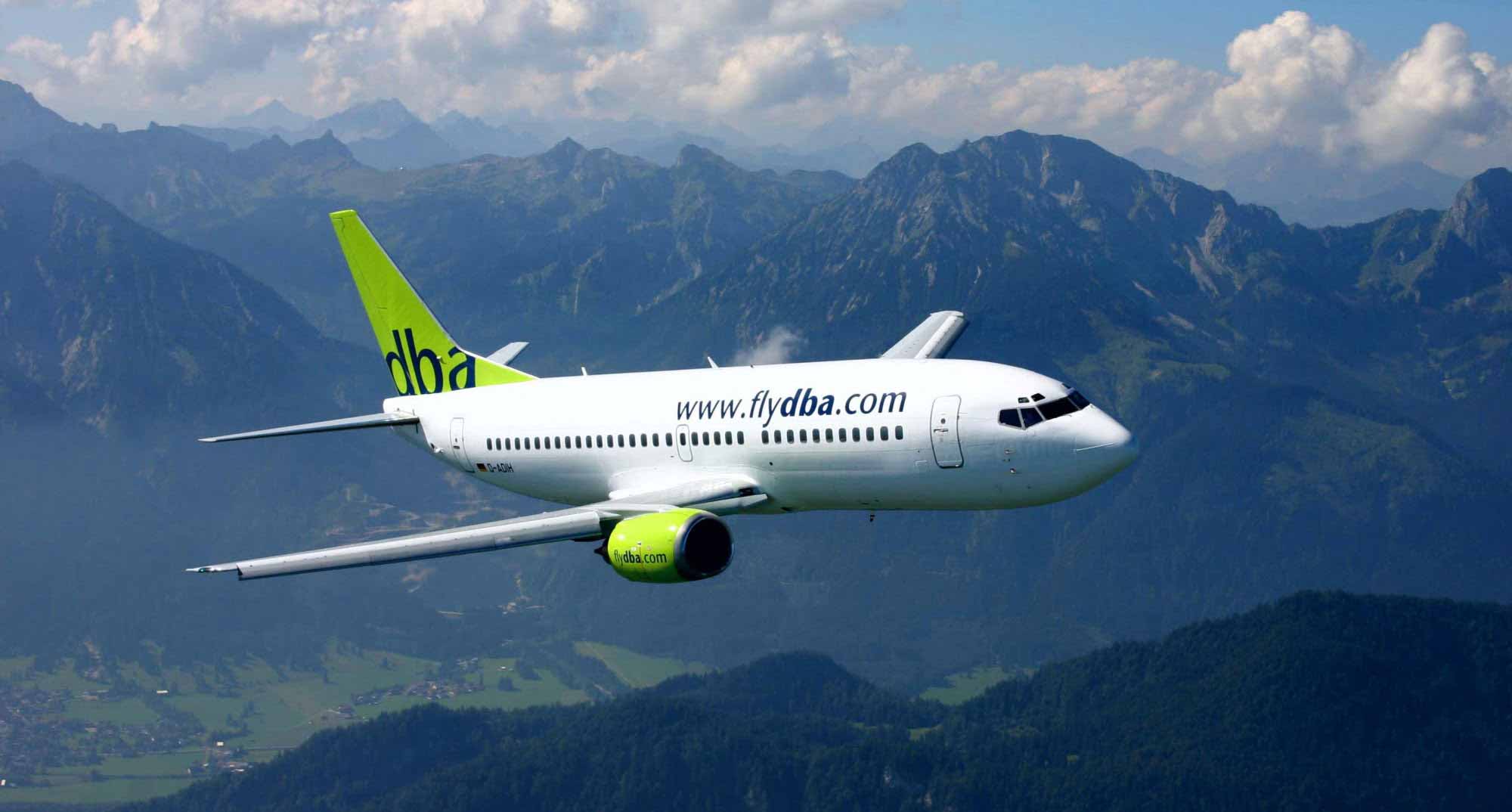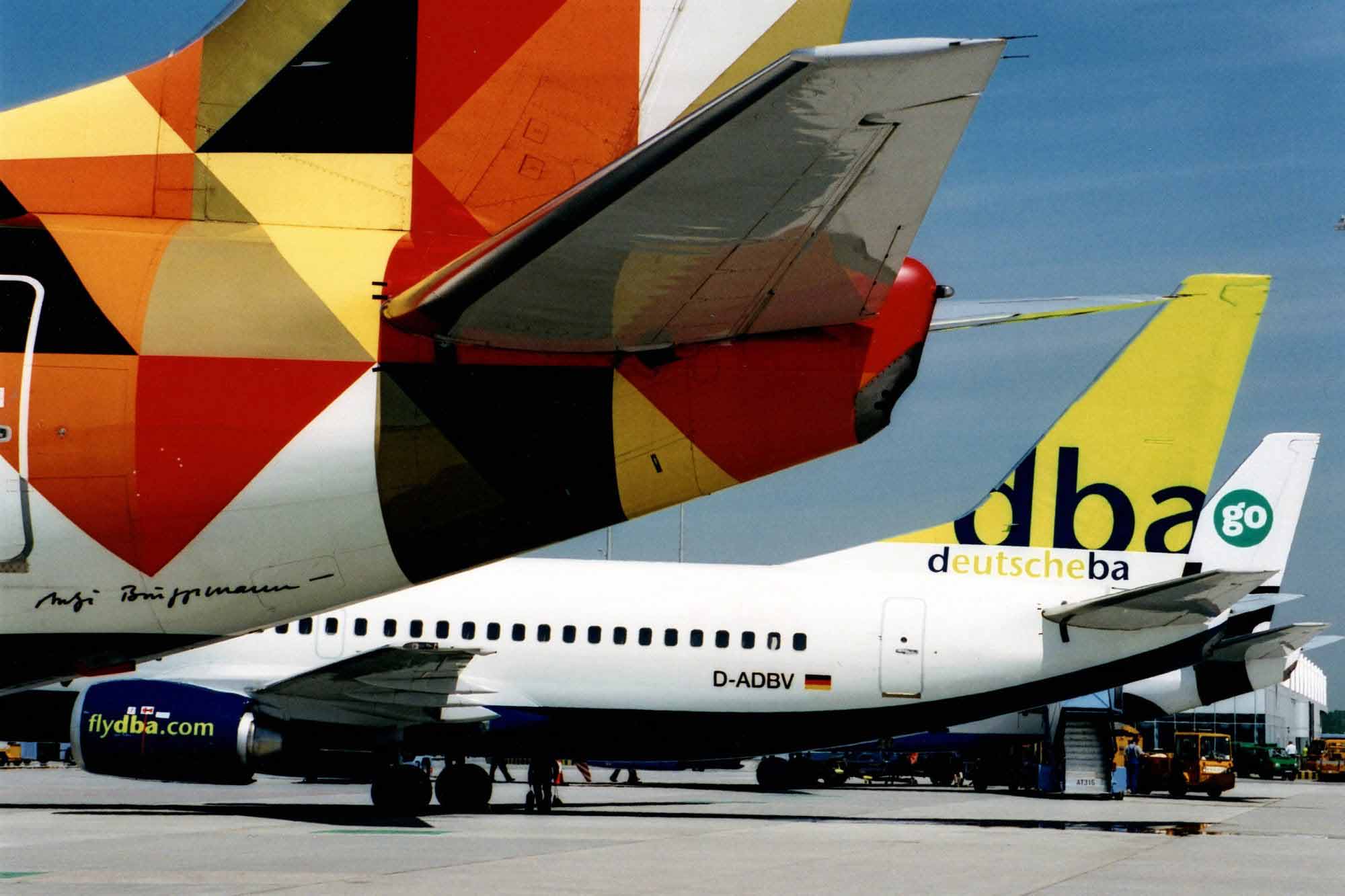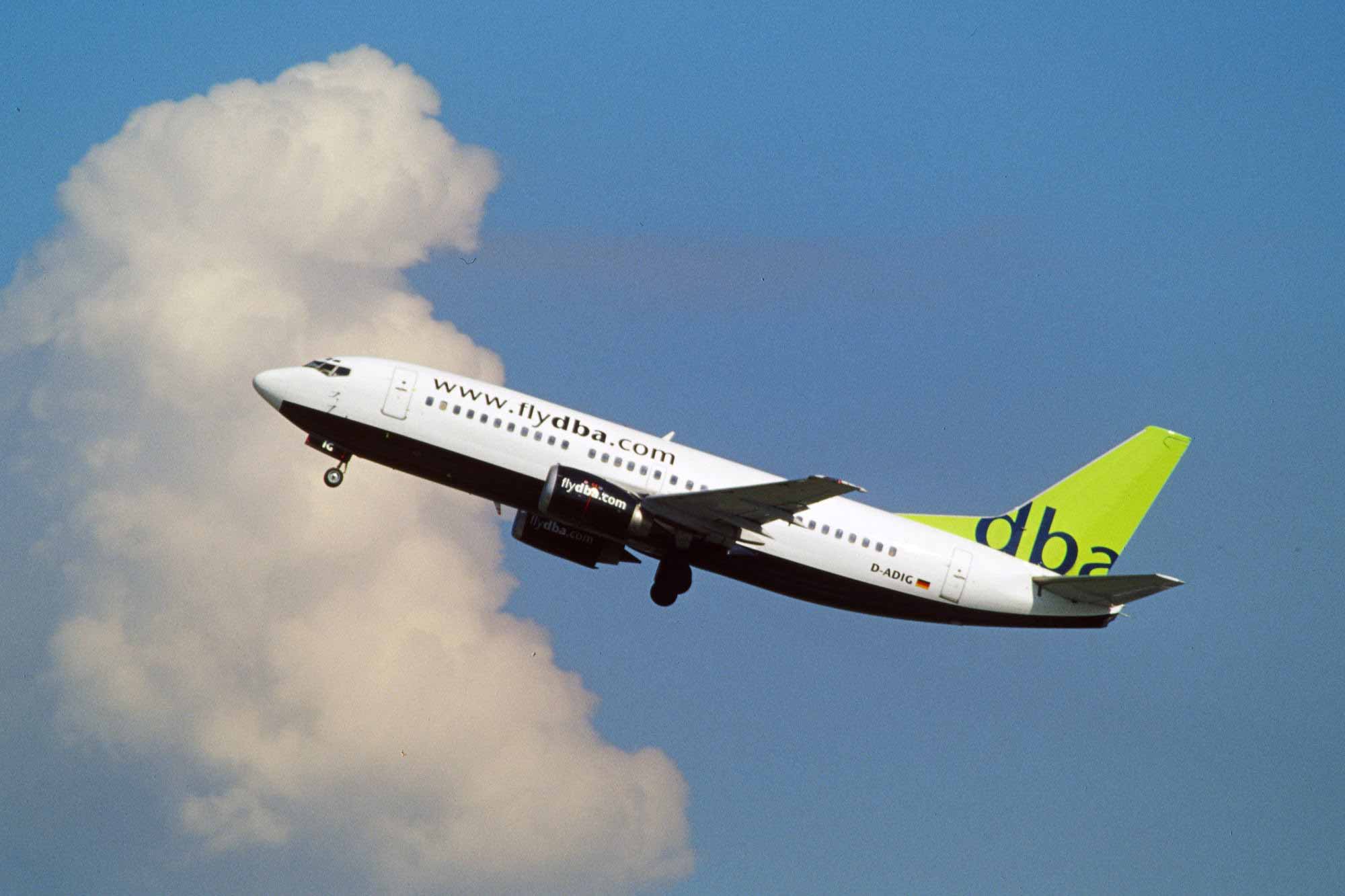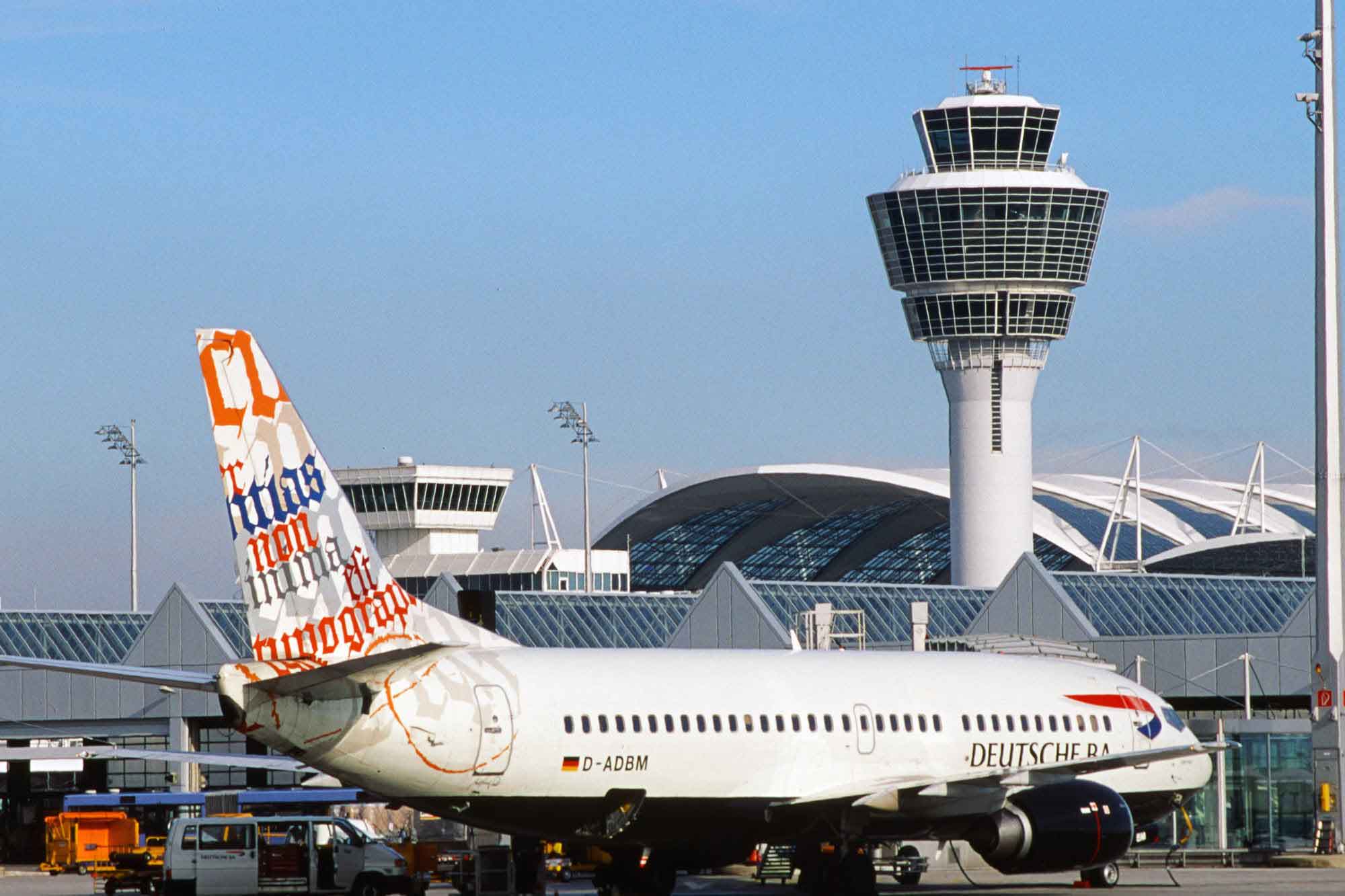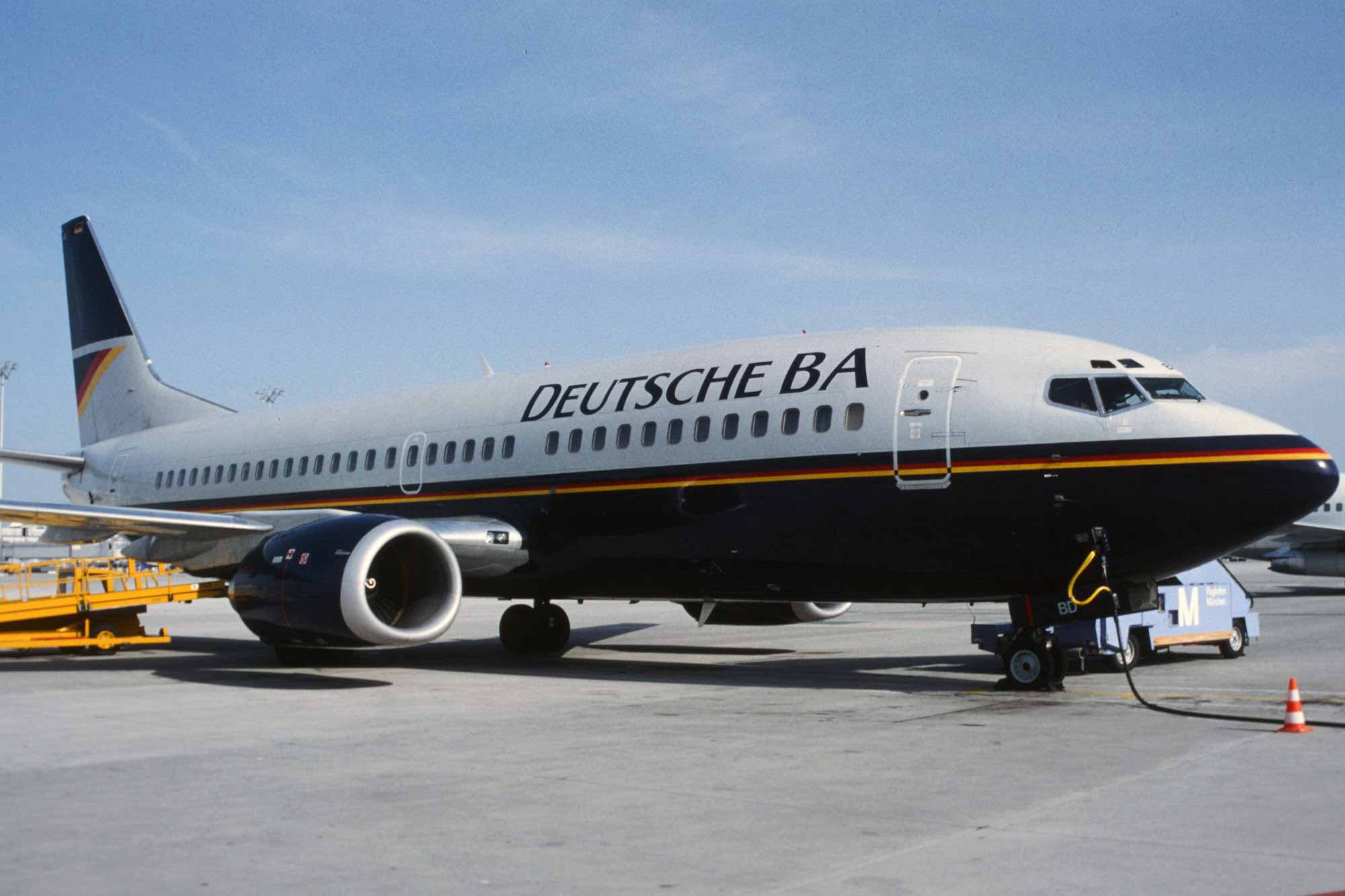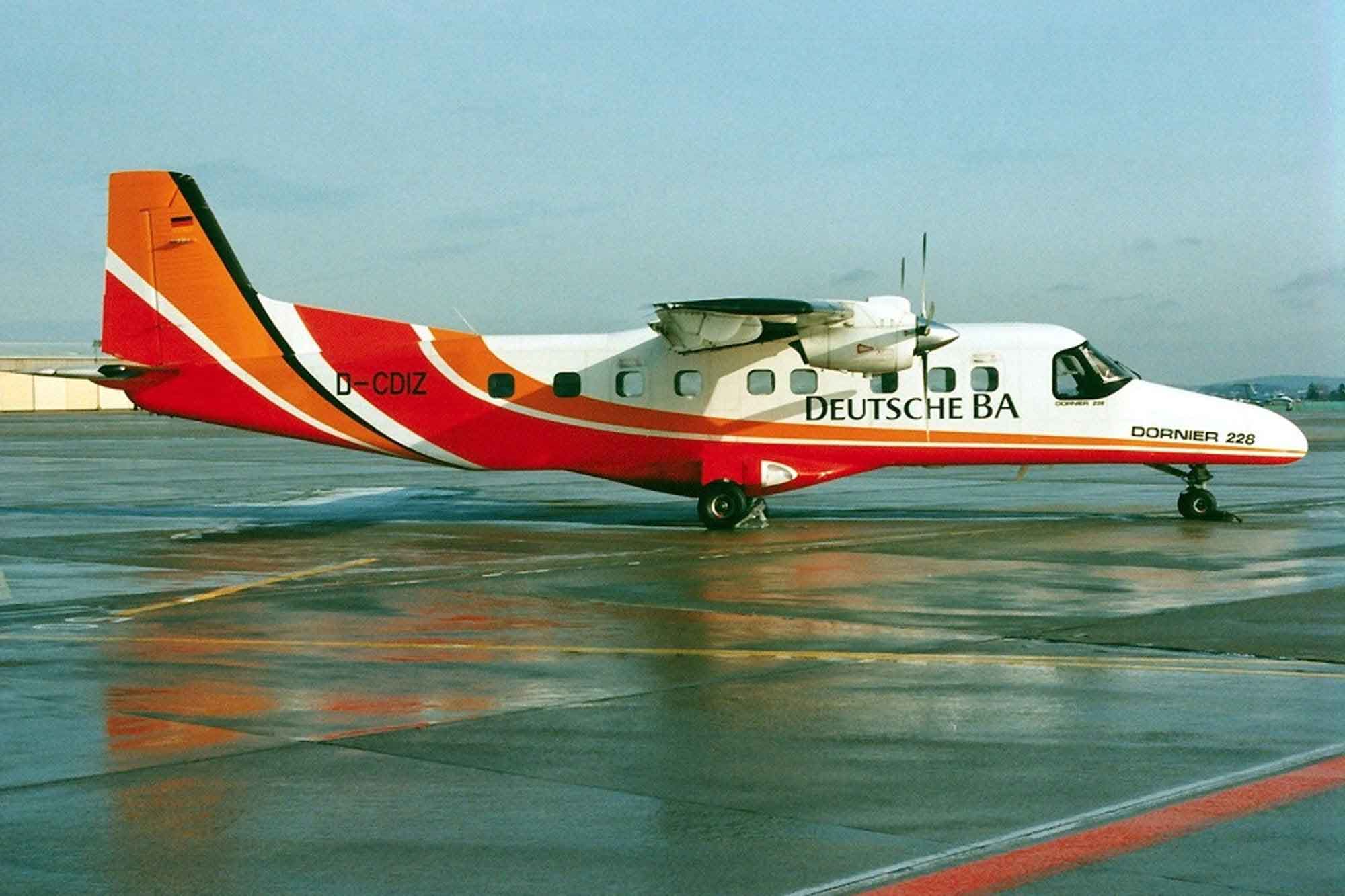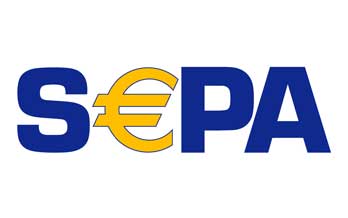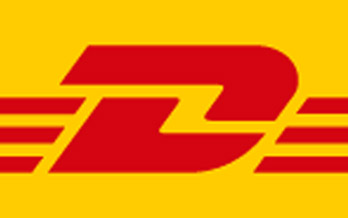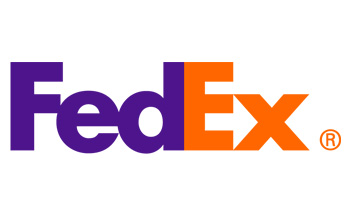British foothold
in the German market
Deutsche BA was supposed to preserve a British role on the new German market from 1992 – a costly experiment.
As an allied airline, the British have a long tradition in German domestic aviation. Already in September 1946, British European Airways (BEA) began operating scheduled flights from Berlin-Gatow to Hamburg and Düsseldorf with C-47s, the military version of the DC-3. Then in 1951, operations moved to Tempelhof, and in 1968, jets took over the Berlin routes, initially the Comet 4B, then for many years the BAC 1-11. From
1974, the British flew as part of the new British Airways (BA) brand. While significance and profitability of the flights had already diminished, it was still a shock for UK airlines when in 1990, German unification came, meaning a farewell to old privileges. There was a need to act, the British had to take over a German airline and its existing traffic rights in order to keep playing a role on the German market.
The color scheme was initially based on the British parent company. Shown here is the first flight to Paris in March 1994.
Its instrument chosen to pull that off was Delta Air Regionalflug GmbH from Friedrichshafen on the shores of Lake Constance. In March 1992, Deutsche BA Luftfahrtgesellschaft mbH was founded, in which BA held a minority share of 49% represented by Deutsche BA Holding. This was the time shortly before European aviation deregulation and long before Brexit, when a British majority
would have meant that Deutsche
BA (DBA, IATA code DI) wouldn’t have been granted traffic rights within Germany. That’s why the initial arrangement was to form a joint venture with three German banks. The company name behind the abbreviation, however, was a clever illusion: It did not mean, as generally assumed, “Deutsche British Airways”, but instead “Deutsche Besondere Anlagen” (meaning “German special funds”).
A Saab 340 of the regional carrier Delta Air from Friedrichshafen at Hamburg airpor, shown ca. 1989.
Scoring with service
The Saab340s of Delta Air were joined by further units of the Swedish-built 33-seaters from Crossair as well as the first of eventually seven Boeing 737-300s leased from Maersk Air in Denmark. On June 29, 1992, DBA (styling itself as “The new line in the country”) launched commercial jet service with flights from Berlin-Tegel, its first base, to Stuttgart and Munich.
The idea was to gain traction offering high service levels at slightly lower fares than Lufthansa’s. Flight attendants greeted passengers with white gloves and DBA offered a Business Class with all the frills. The route network, however, was incoherent and driven by the DNA of a regional airline, which of course Delta Air had been.
In 1993, DBA began operating Fokker 100s as well, introducing new international routes seemingly at random. A year later, the fledgling airline transferred its main base from Tegel to the new Munich Airport, offering better infrastructure, but not a superior home market. From spring 1995, the fleet
became even more complex with the addition of the new and modern Saab 2000. The 50-seaters were delivered from the factory in Sweden and flew on niche routes lacking large-scale business. DBA remained a money-burning machine, but that didn’t put off anyone at the time.
The most interesting airliner liveries in Germany
The entire turboprop fleet was already sold in early 1997. The only international routes kept in the network besides London-Gatwick were Moscow and St. Petersburg. Then came the fleet streamlining and the exit of Saab 2000s and Fokker 100s by late 1997. At the same time, DBA adopted the revolutionary brand design premiered by BA that
“year. The campaign called Global Design” with its “ethnic tails” was adapted for Germany by DBA, creating the most interesting patterns to ever appear on airliners in the country. “It was a fun airline, everybody was young and a bit cheeky in trying to bully Lufthansa,” recalls Carl Michel, CEO from 1996 to 1999.
Sterntaler, Gothic, and Edelweiss were the names of the liveries, designed by German artists, on the tail units of Deutsche BA in 1997, complementing the “World Images” of the parent company British Airways introduced in the same year.
From 1998 DBA operated a pure Boeing 737-300 fleet of 18 aircraft. In the 1997/98 financial year, Germany’s second scheduled airline carried 2.8 million passengers, but never got near profitability. “DBA was always loss-making, but BA earned money internally by selling us extra services, and viewed in that context, DBA had left the red by the end of the nineties,” states Carl Michel. And he can put numbers to the
losses: “In my last year, they amounted to ten million deutschmarks, whereas before it had been between ten and 30 million deutschmarks in losses a year – with three million passengers carried that meant a loss of about ten deutschmarks per customer,” calculates Michel. In total, he estimates BA sunk about 100 to 150 million pounds (about 150–220 million euros in today’s money) into its German affiliate.
Joining the Oneworld alliance
By early 1999, the fleet had been significantly rejuvenated, boasting an average age of about one and a half years for the 18 Boeing 737-300s, 13 of which had joined DBA factory-fresh from Seattle. DBA was now more integrated
into the Oneworld alliance system with BA, being one of its founders, and DBA offered code-share flights from Munich to Madrid and Barcelona with Iberia, and between Hamburg and Helsinki for Finnair.
Otherwise, focusing on its home market began to pay off: “On the seven German domestic routes we flew, a market share of one third was reached, sometimes even 36 to 38%, and on Cologne/Bonn to Berlin it was even above 40% as we operated
the government shuttle”, reports Michel. His overall assessment is mixed: “At least, we were able to fulfil BA objectives in the sense that we achieved a good second position in the German market, reaching more or less breakeven.”
Repositioning as a business airline
The final step was the attempt to reposition DBA as a low-cost carrier. EasyJet, one of the market leaders in Europe, secured a purchase option in 2002, valid for one year and underpinned by monthly fee payments to convert DBA into easyJet Germany. But in mid-March 2003, the takeover failed. Instead, investor Hans Rudolf Wöhrl and his Intro company took over DBA for one symbolic
“euro, relieving BA of a burden. In the red as always with no profits ever made since its foundation in 1992”, the new owner summed up, and now had to rebrand the airline, but was shying away from big marketing spending. So, he came up with “dba” in lower case, a supposedly German abbreviation for “the business airline” or “the better alternative”.
To maximize the contrast of its new visual appearance, the chosen company color was a light green in which engine cowlings and tails were painted. Bucking the industry trend, Wöhrl stopped the transformation into a pure low-
cost airline and instead positioned it as a business airline between low cost and full-service carriers. During the 2004/05 financial year, the former DBA was in the black for the first time in its history.
New sobriety returned to dba after the Wöhrl takeover. In front the old artwork, in the back the sterile green, at the very back the British low-cost carrier Go, also a BA subsidiary.
Sold to Air Berlin
The unexpected outcome attracted former competitors; in March 2005, the owner of Germania, Hinrich Bischoff, bought 64% of dba’s shares and brought along the fleet of his unprofitable low-cost airline Germania Express (gexx) to operate for dba. Through this deal, the Munich-based airline advanced to become the number three German airline with 27 aircraft on up to 180 daily flights. Five months later, the deal was nullified on Bischoff’s request, but still some 14 of his Fokker 100s continued to fly for dba.
Now, another interested taker appeared: Joachim Hunold, CEO of Air Berlin, had always had an eye on dba, and now he insisted and even offered 130 million euros for it. On August 17, 2006, Wöhrl announced the sale to Air Berlin. On April 1, 2007, the dba brand ceased to exist publicly, all aircraft flying in the colors of the new owner, and in 2008 dba’s administration was dissolved. On November 14, 2008, dba operations ended after a strike by cabin staff, two weeks earlier than planned. At this point, dba was still operating 22 Boeing 737-300s.
Text: Andreas Spaeth
Photos: Andreas Spaeth and Flughafen München
Unforgettable
This text is an abbreviated and translated version of a chapter of a new book by Andreas Spaeth (“Unvergessen – legendäre deutsche Airlines”, available only in German) about defunct West-German jet operators such as Atlantis, LTU, Air Berlin, Aero Lloyd, DBA, and Germania. Motorbuch-Verlag, 192 pages, 32,00 Euro.


